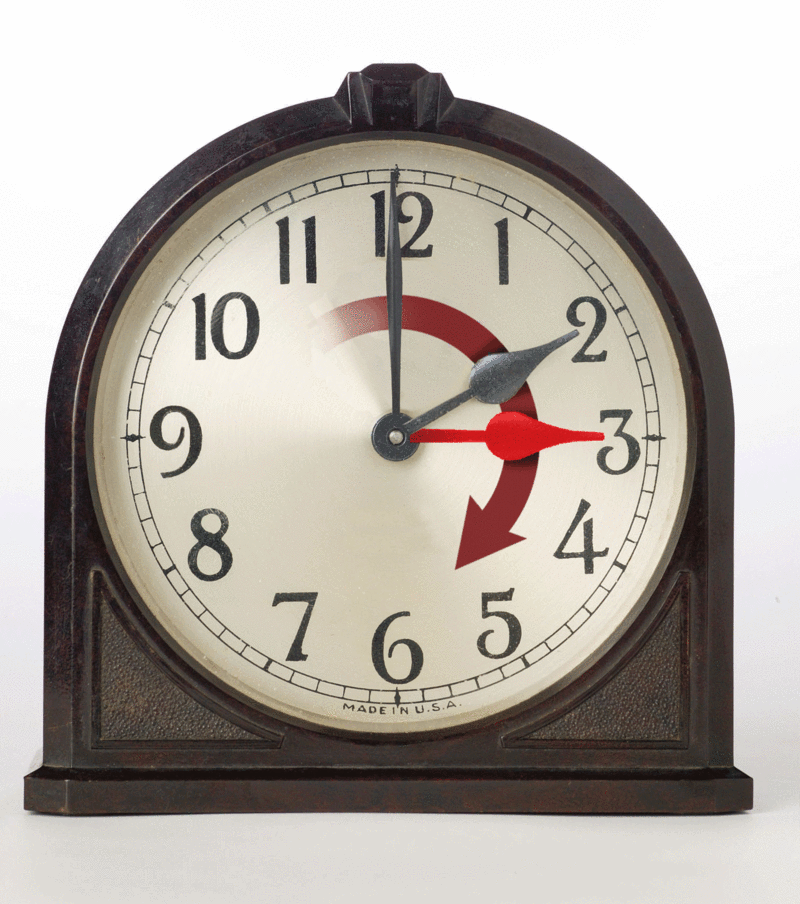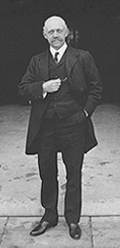Daylight-saving Time
Twice a year, people in many countries around the world move their clocks a full hour ahead or behind, depending on the season. The common shorthand for this is Spring Forward and Fall Back.  In the United States (as of the Energy Policy Act of 2005), daylight-saving time begins for nearly all of the country at 2 a.m. on the second Sunday in March and ends at 2 a.m. on the first Sunday of November. Most of Arizona does not recognize daylight-saving time. (This used to be the case with part of Indiana as well, but that state switched over in 2006.) In the United States (as of the Energy Policy Act of 2005), daylight-saving time begins for nearly all of the country at 2 a.m. on the second Sunday in March and ends at 2 a.m. on the first Sunday of November. Most of Arizona does not recognize daylight-saving time. (This used to be the case with part of Indiana as well, but that state switched over in 2006.)Countries belonging to the European Union have a standard "summertime period" that runs from the last Sunday in March through the last Sunday in October. Southern Hemisphere countries have differing dates for when people set their clocks back, but the seasons are reversed so when people in Australia and New Zealand, for instance, Fall Back, it's springtime in the U.S. and Europe. Daylight-saving time exists in part to save electricity. When daylight lasts longer, people are home for fewer hours in the day and use less electricity at home. However, shops and entertainment venues can be open longer as well, so this is potentially just a shifting of where electricity is generated. Studies have consistently shown that the more daylight in the day, the fewer traffic accidents occur, since the majority of road accidents occur after dark. Many historians point to an essay by Benjamin Franklin as an early idea for adding daylight to the day. Daylight-saving time as we know it today was first proposed officially in 1895 in New Zealand, by an entomologist named George Vernon Hudson. Hudson proposed lengthening the day by a full two hours.   Hudson's proposal didn't take off in New Zealand or elsewhere, but the one-hour version that many countries now have was the brainchild of an English outdoorsman named William Willett, who published a pamphlet titled "The Waste of Daylight" that saw widespread release and support, especially from the British House of Commons member Robert Pearce, who introduced a bill in Parliament in 1908. Hudson's proposal didn't take off in New Zealand or elsewhere, but the one-hour version that many countries now have was the brainchild of an English outdoorsman named William Willett, who published a pamphlet titled "The Waste of Daylight" that saw widespread release and support, especially from the British House of Commons member Robert Pearce, who introduced a bill in Parliament in 1908.Pearce's effort failed to get enough support for a law. Willett continued to advocate in public until he died, in 1915. World War I was consuming the major powers of the world at this time, and Germany and its allies began using the daylight-saving idea to conserve coal. Germany's enemies followed suit not long after, with the exception of the United States, which approved the idea in 1918. The idea didn't find so much favor in the U.S., though, and it was shelved until 1942, during World War II, again to conserve energy. In fact, the clocks remained an hour ahead until Sept. 30, 1945, after the war ended. The Uniform Time Act of 1966 made possible the daylight-saving time that Americans observe today. Since then, the exact dates have changed, although only by a week or so. Click here for a list of countries that observe daylight-saving time. |
|
Social Studies for Kids
copyright 2002–2024
David White




